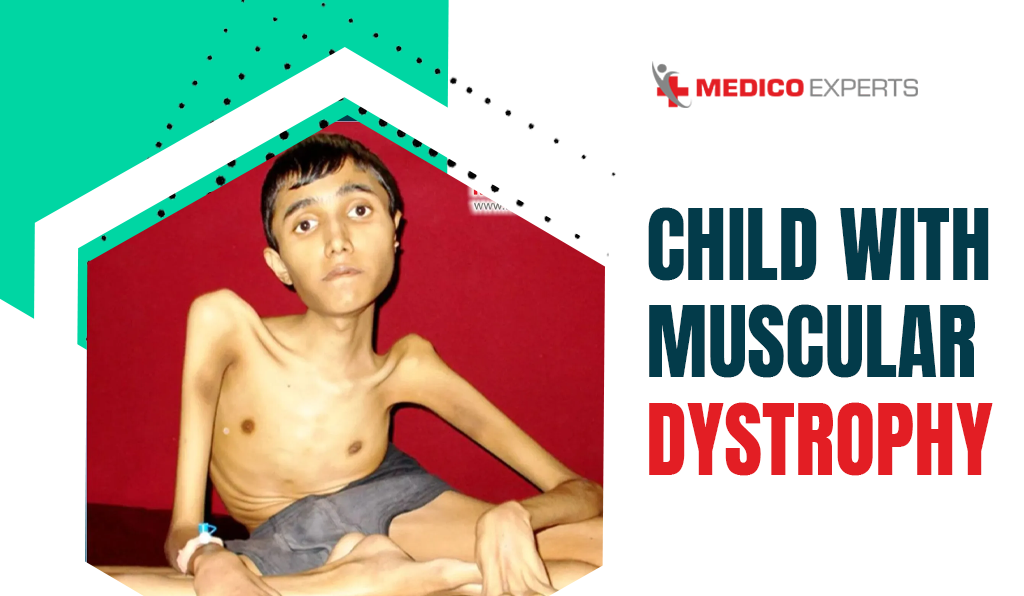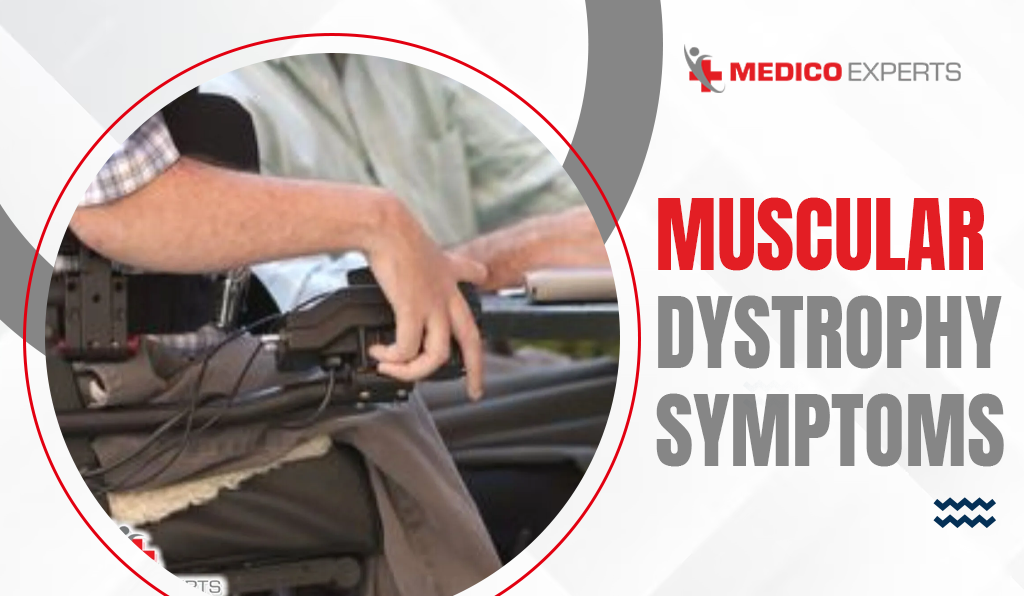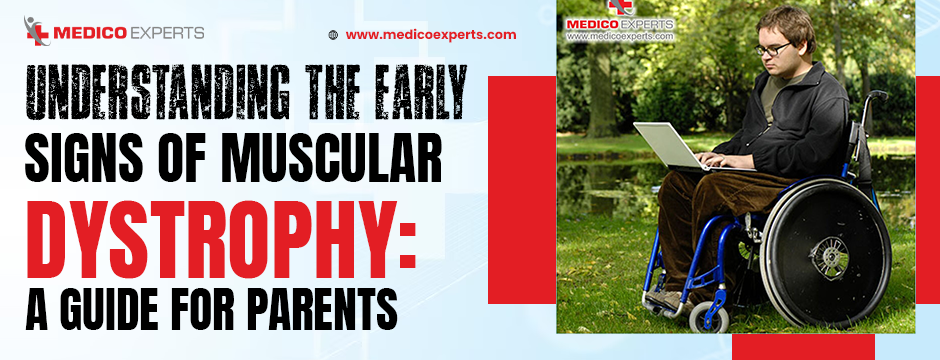Muscular Dystrophy (MD) is a group of genetic disorders that result in progressive muscle weakness and shrinking of the muscles. The disease can significantly impact both mobility and quality of life. Early diagnosis is important in controlling muscular dystrophy symptoms and preventing disease progression. As a parent, recognising the early signs of muscular dystrophy can help you get top-notch medical care.
What is muscular dystrophy?
Muscular dystrophy is a term used to describe a collection of genetic disorders that lead to muscle fibres weakening and degenerating progressively. The condition mainly involves the skeletal muscles responsible for movement, and certain types may also impact the heart and breathing muscles. Different types of MD exist, all with varying ages of onset and severity. The most prevalent in children is Duchenne Muscular Dystrophy (DMD), which affects boys more commonly.

Early Indicators of Muscular Dystrophy in Children
The symptoms of muscular dystrophy are not necessarily evident at birth but can begin to manifest early in childhood. Parents need to monitor the child’s physical development and pay attention to any issues regarding movement, strength, and coordination. The following are the most important early indicators that might suggest the existence of muscular dystrophy.
1. Delayed Motor Milestones
Some of the first signs of muscular dystrophy include a delay in the attainment of developmental milestones such as
- Sitting up by themselves
- Crawling
- Standing
- Walking
Children with MD often experience developmental delays and may show inconsistent progress in motor skills.
2. Unstable and frequent falls
Kids with MD may have poor balance and coordination. Parents may see that the child tends to fall or trip while walking or running. The reason is weak leg muscles, which cause instability.
3. Trouble Climbing Stairs
Difficulty climbing stairs is a common early symptom of MD. Children may use their hands to push themselves up or avoid stairs due to muscle weakness in the hips and thighs.
4. Waddling Gait
Most children with MD acquire a characteristic waddling gait as a result of hip muscle weakness. This abnormal gait can become apparent as the child gets older and starts walking more often.
5. Huge Calf Muscles (Pseudohypertrophy)
One of the characteristic features of Duchenne Muscular Dystrophy is swollen calf muscles. Although they will look muscular, the muscle fibres are usually taken over by fibrous tissue and fat, giving rise to loss of muscle power.
6. Gower’s Sign
Gower’s sign is a telltale indicator of MD. Children with weakened hip and thigh muscles struggle to rise from a sitting or lying position. They use their hands to push against their legs for support, gradually climbing up their own body to stand.
7. Difficulty Running and Jumping
Kids with MD tend to have difficulty with tasks that involve powerful leg muscles, like running and jumping. They might be slower than other kids and tend to shy away from physically strenuous activities.
8. Muscle Weakness and Fatigue
Muscular dystrophy leads to worsening muscle fatigue. Kids might tire easily, have trouble with simple tasks, and need to take frequent breaks to rest.
9. Trouble Raising Arms or Holding Objects
Muscle weakness in the shoulder and arms may cause children to have a hard time lifting their arms, picking up objects, or performing simple activities such as combing their hair.
10. Speech and Swallowing Difficulties
Certain types of MD, specifically Duchenne and myotonic muscular dystrophy, affect speech and swallowing. Speech may be slurred, words may be hard to form, or food may become stuck while swallowing.

When to See a Doctor
If you notice any of the foregoing signs in your child, it is critical to see a paediatrician. An initial assessment by a geneticist or neurologist can confirm or exclude muscular dystrophy. Tests like genetic testing, muscle biopsy, electromyography (EMG), and creatine kinase (CK) level testing can be conducted to evaluate muscle function and genetic mutations.
Role of Stem Cell Therapy in Muscular Dystrophy
There is no definitive cure for muscular dystrophy as of now, but stem cell therapy brings new hope to patients. Stem cells possess regenerative abilities to repair and regenerate injured muscle tissues. Scientists are studying various types of stem cells, such as:
- Mesenchymal Stem Cells (MSCs): These differentiate into muscle cells and curb inflammation.
- Induced Pluripotent Stem Cells (iPSCs): These artificially derived cells have the ability to produce healthy muscle fibres.
- Embryonic Stem Cells: These can potentially develop into different cell types, such as muscle cells.
Stem cell therapy will seek to halt disease progression, strengthen muscles, and restore mobility. While studies continue, clinical trials have auspicious outcomes in enhancing muscle function and postponing the onset of symptoms.
Supporting a Child with Muscular Dystrophy
The care of a child with muscular dystrophy needs a multidisciplinary approach. Parents can take care of their child by:
1. Physical Therapy
Physical therapy assists in maintaining the flexibility of the muscle, enhancing mobility, and preventing joint deformity. Stretching exercises and hydrotherapy may be useful.
2. Nutritional Support
A nutritious diet containing protein, vitamins, and antioxidants can assist in maintaining muscle health. Vitamin D and omega-3 fatty acids as supplements may aid in muscle function.
3. Assistive Devices
Orthotic braces, wheelchairs, and other mobility devices may facilitate a child’s independence and take the strain off weak muscles.
4. Emotional and Psychological Support
It can be difficult for the child as well as the family to receive a diagnosis of muscular dystrophy. Emotional well-being can be maintained by seeking counselling, therapy groups, and schools for children with special needs.
Conclusion
Identifying early muscular dystrophy symptoms is vital for timely treatment. If you observe motor delays, repeated falls, or muscle weakness in your child, approach a doctor for assessment. Although there is no cure, research into stem cell therapy holds promise for improving quality of life and slowing disease progression. Parents are a key support for offering physical, emotional, and medical care to enable their child to have a quality life in spite of the difficulties posed by muscular dystrophy.
Staying informed and proactive, you can be assured that your child gets the finest care and assistance for what they face in the future.
Stem cell therapy for muscular dystrophy offers a promising way to enhance the quality of life by repairing damaged muscles, reducing inflammation, and improving mobility, making patients more independent while easing the burden on carers. MedicoExperts connects you with top specialists in India, providing support at every step to ensure a smooth treatment journey.




